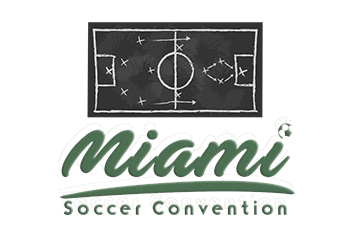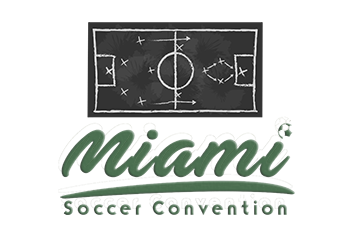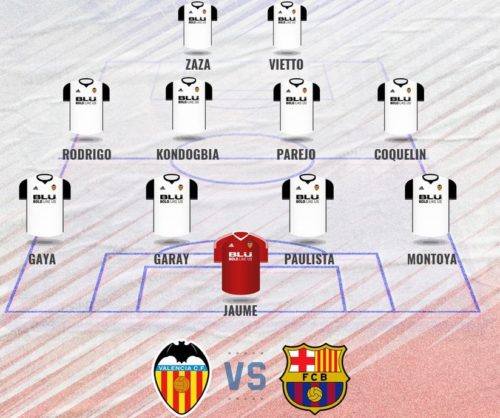Is the idea of playing with two strikers extinct? Why do most teams play with three forwards (#9,7,&11)?
Without a doubt this generation of coaches have been greatly influenced by two of the greatest: Guardiola & Mourinho. Most of the coaching courses I had attend emphasize mostly on discussions about 4-3-3, 4-2-3-1 etc. Even when looking at the pro teams today or competing at the youth level including DA and College, most team’s line up with some type formation that revolves around three forwards. Two great examples are the ultra-defensive Inter from Mourinho or the Ultra offensive Barcelona from Guardiola
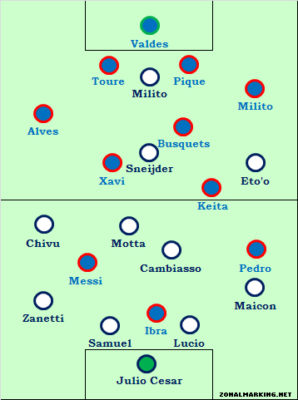
With that in mind, I wanted to break down the roles of the two strikers at a top level team. When are they more effective at creating scoring chances? What type of goals do they tend to capitalize? What are there movements like when the teams recover in the defensive third? Offensive third? Do they tend to be a more direct or combinative team? Etc. And What better example that Marcelino’s Valencia and his traditional 4-4-2.
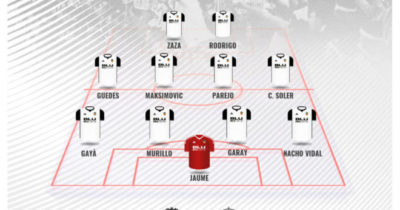
Build up
When building out of the back from the ground, Valencia tends to play through the center of the pitch. Parejo looks to drop in front of the center backs the two strikers to take charge and lead the build out. This gives times to the full backs and Outside mids to get wide and create width & passing lanes in front of the ball.
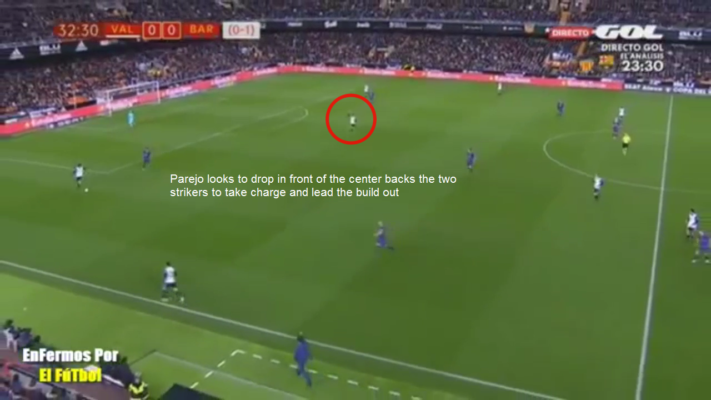
The strikers (Zaza, Vietto, Santi Mina, or Rodrigo) are constantly moving in front of the ball, looking to support the player on the ball by creating space and passing options: The striker on the same side of the ball tends to drop in the pocket of space between the opposite CM and CB to provide a first option. As this occurs the 2nd forward looks to stretch the remainder defenders by running into the space left by the 1st striker which in turns provide another option for the 1st attacker, in behind the back fours line.
They are constantly being use as pivots or targets to move the block up the field and get the ball with time and space to players in behind the midfield line, the famous 3rd man. In the video you can notice
How Parejo, Murillo, or Paulistao usually try to link a pass with the furthest player, Zaza or Rodrigo, this enables any of the Midfielders to position himself in behind the opposites back to receive the ball with time and space to run at the defensive line. Zaza, Rodrigo, and Santi Mina tend to receive the ball with their back to goal which limits their game but are efficient to pivot with one or two touches to Guedes, Kogdobia, and/or Parejo.
When the build up is in its developing stages, and the team is just starting to connect its first passes and is getting out, we can clearly notice how both strikers purposely hold the opposite back four as high possible instead of rushing to drop into zone 2. This allows to create future spaces for either one to drop and receive the ball when appropriate and creates time and space in the middle third for Parejo, Kongdobia, Murillo to build out.
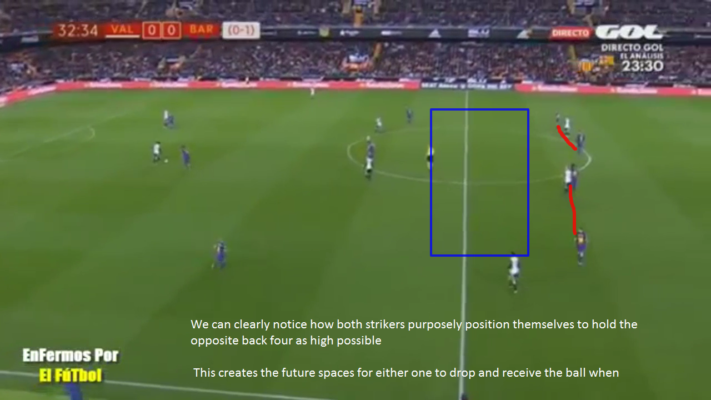
Direct Attack
Valencia Looks comfortable attacking with direct football. More importantly Marcelinos’ team constantly creates chances to goal playing direct ball to their forwards.
Neto, The Goalkeeper, and/or the center backs are the ones in charge of playing long direct balls. Usually when opposite teams high press: for example When in possession in the defensive third and looking to build out or when defending close to their area and immediate after recovering ball in defensive third with a lot of space to attack.
The two strikers are the constant reference of direct balls with the intent of a) finding a 1v1 or 2v2 in the highest line b) looking to play in behind the opposite back line with either a flick or exchanging positions between Zaza and Rodrigo/Santi Mina or c) after skipping the opponents midfield, using one of the strikers as a pivot, to bring the ball down to one of the players that joins the attack in the second wave, usually the right or left midfielders: Guedes and/or Soler.
The objective of the direct ball varies depending on the opponents shape. When a team high presses and has a high defensive line (ej. Barcelona) VCF looks to play through balls to Zaza or Rodrigo in behind the back line or to find a clear 1v1 for Zaza or Rodrigo/Vietto to combine and go to goal as fast as possible. This Direct balls tend to more centrally and vertical, having a clear intend of going to goal fast!
When the opposite team has a semi high defensive line or is sitting on top of their 18” rather than trying to play through them, The intend of the direct ball is to skip the opponents midfield to get a player from the second wave to receive in better conditions with time and space to run towards the defensive line. For that the long ball tends to be played more on to the exteriors, looking for one of the strikers to drop and lay the lay the ball to Guedes or Soler who tend to position themselves in the pockets behind the opposite midfielders.
Finishing Zone (Zone 3)
Valencia tend to deploy their attacks in wide areas with the objective of crossing and finding Zaza and/or the second striker(Vietto, Santi Mina, Rodrigo) whom are the references in the finishing zone. The striker in the opposite side of the ball constantly looks to rush the 1st post. Valencia tends to end with two to four players inside the box prior to the cross: 1 or 2 rush the 1st post, one ends up between PK spot and 2nd post and last one on top of the 18”.
One of the strengths of VCF strikers is when receiving with their back to goal. A) Santi Mina is used as a pivot to eliminate the opponents midfield line, Kongdobia(#8) receives with time and space to play the through ball to outside midfielders. B) Zaza pivots on top of the box to eliminate opponent and lay it off for Guedes to go to goal.
Counter Attacks
Valencia Is a team that tends to defend very deep in their own half, defending with two lines of four (4) close to their 18”. Even both strikers drop behind the half which creates loads of space in behind the opponent defense.When recovering in the defensive third, option A is to unfold a fast transition to goal as soon as possible.
The first option is to find one of the target players – Zaza, Rodrigo, o Vietto – both through the center of the field or the exterior areas depending on opponents shape. A common pattern is having the #9 drop to pivot the ball back to #6 or 8 for him to play through to either the second striker who is sprinting to attack space in behind the defensive line. Through the center channel the style is more associative vs the exterior where tends to be individual progression from of the strikers or outside midfielders.
As the team defends close to their box, the two #9s are actively moving to provide a clear line of pass to to break the pressure. As soon as the pass break the first line of pressure the two strikers role are to provide runs try an penetrate in behind the opponents back four.
A common theme is to attempt through or direct ball after 3 or passes max which does not give enough time for 2nd wave players to join counterattack.
When they are not able to counter option B is to clean the play and keep possession. In the video, Vietto receives the ball with his back to goal and Pique on his back, not able to play the through he is ‘new’ role is to keep the ball and to secure possession.
Valencia recovers the ball often In the attacking third, close to the opponents 18’. They are able to press as a block when they have a lot of numbers around the ball ready to press immediately after the loss of possession. Usually 5-7 players participate: the 2 strikers, outside and center midfielders (4), and one of the full back. 3-4 four players tend to sit close to the midfield line ready to a) step to recover and/or b) ready to defend counter or long ball.
The priority after recovering is to go to goal and finish the play as soon as possible. Zaza and Santi Mina role is to provide options to the 1st attacker through runs.
